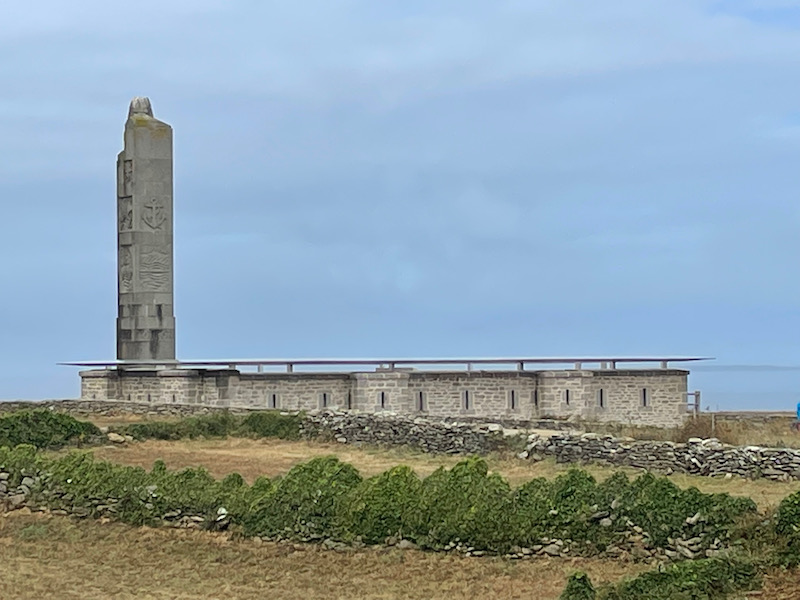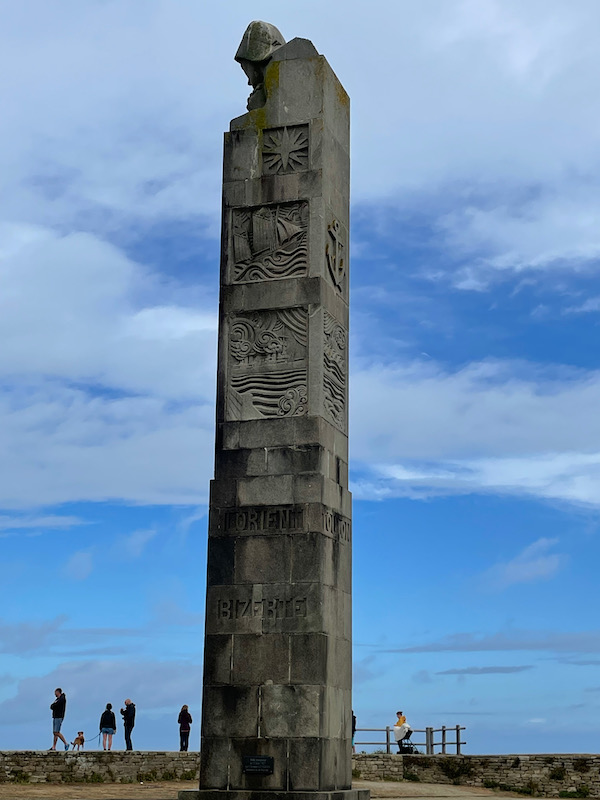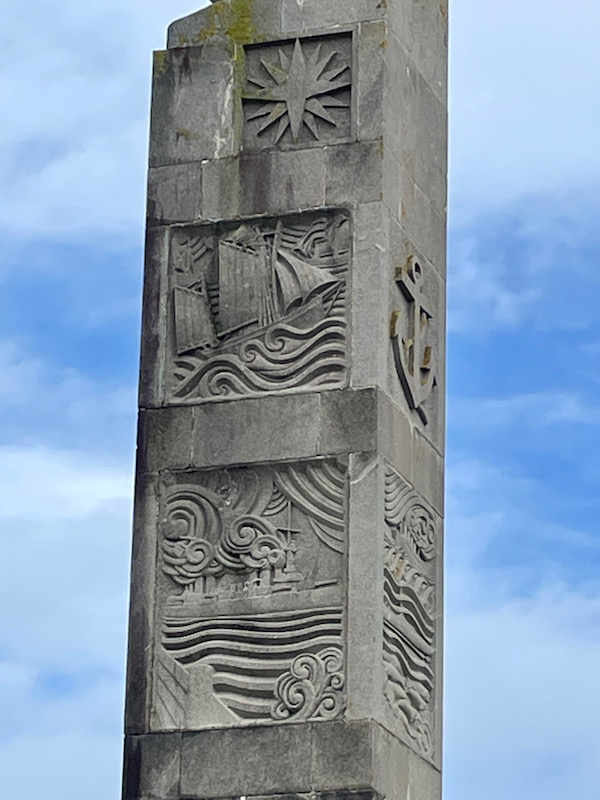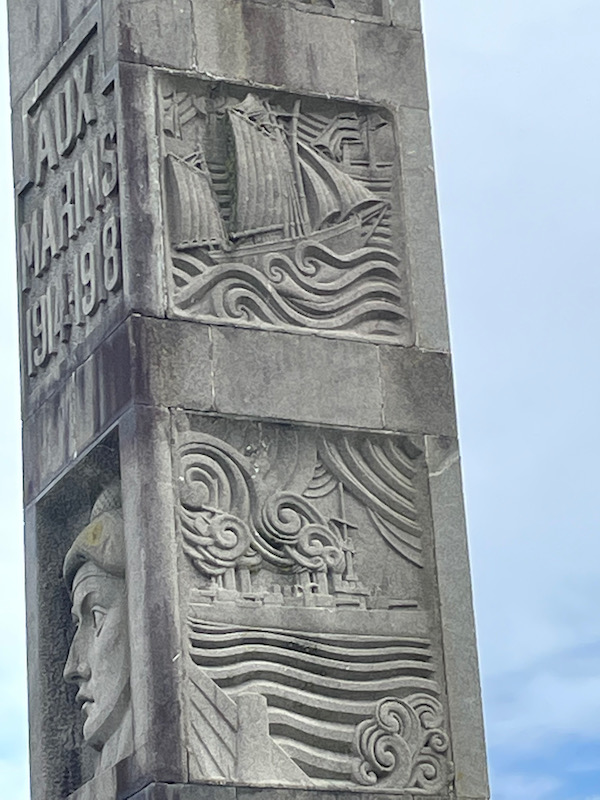Our Blog - Pointe-Saint-Mathieu, France
This morning's walk took us to another beach near Fort de Bertheaume. The actual fort is located on an island which was only accessible at low tide, although since 1835, there is a footbridge for access at any time. Fort de Bertheaume appears for the first time in writing in 1474, but it seems that this first fort was destroyed in 1558. Vauban decided to make it the first defense rampart of the harbor of Brest and established a battery here in 1689, in order to repel an attack or an English landing. It proved useful during the failed landing of the English at Camaret in 1694. The barracks and surrounding wall, the powder magazines, and the lower battery date from the middle of the 18th century. The fort was used by the German troops who settled there in 1940. After the war, it was abandoned for 45 years. It wasn't open when we were there and I'm not even sure the actual fort is visitable, but the signs indicated that you could go zip-lining there.
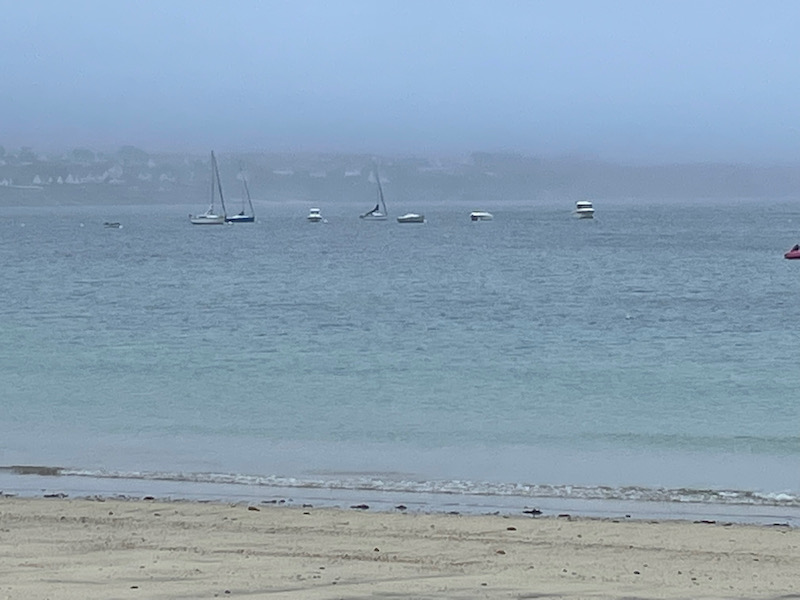
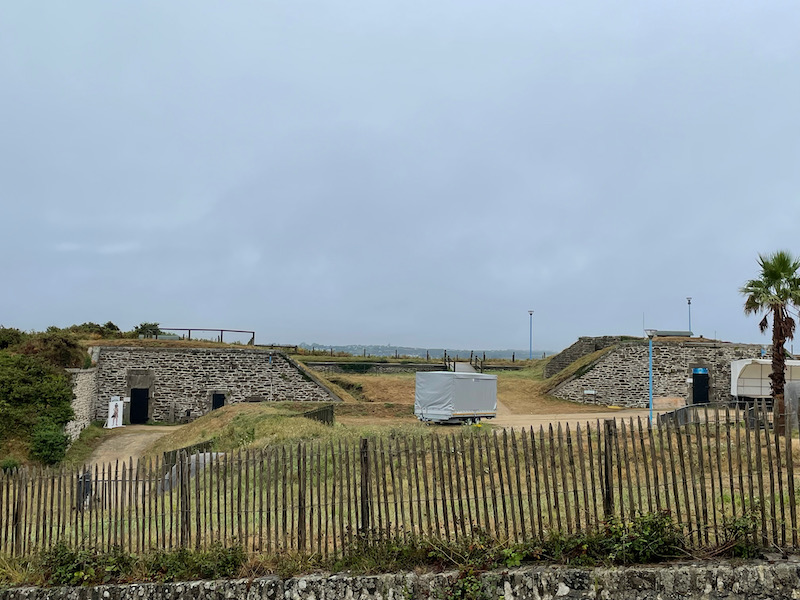
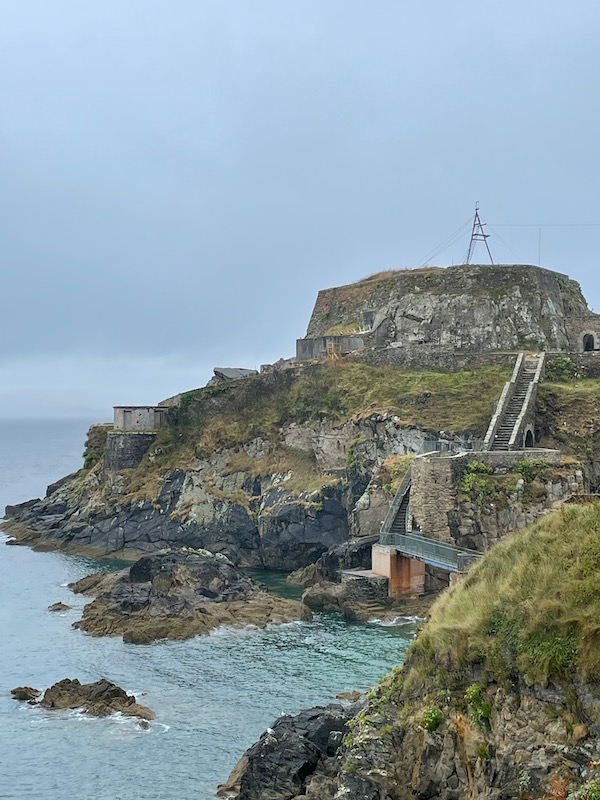
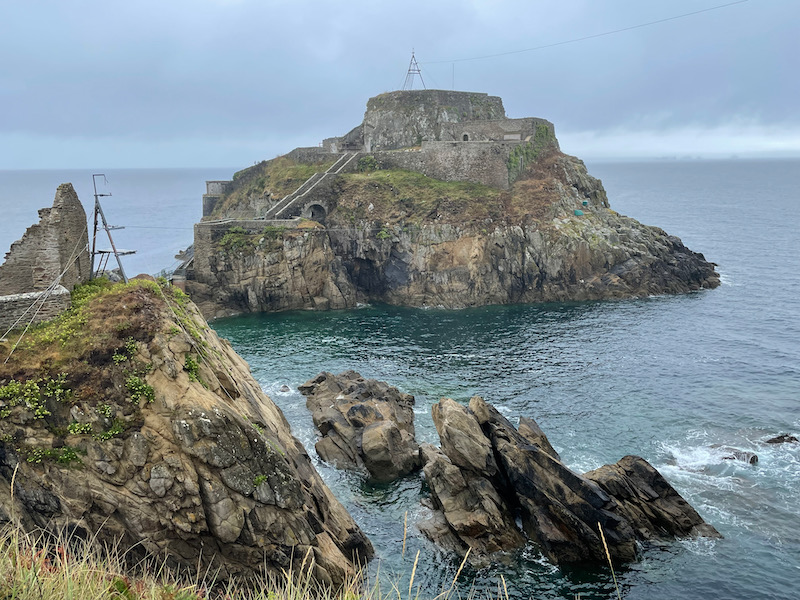
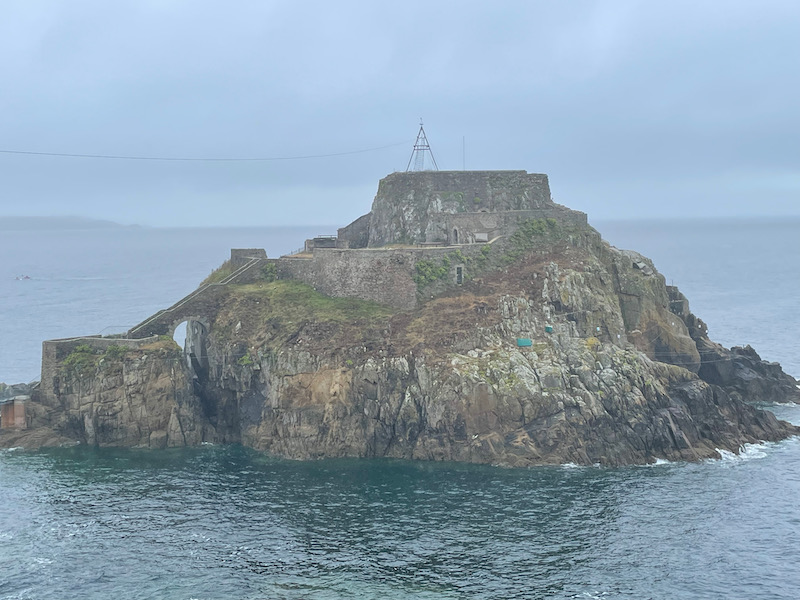
Legend has it that, bringing back the body of the apostle Matthew, merchants from Léon were saved from shipwreck off this point named Point Saint Mathieu. In the 6th century, a monastery was founded here to house the relics of the saint. An imposing Benedictine Abbey was built between the 11th and 15th centuries although most of it is gone, with only the Romanesque facade, the stone vaults of the choir, and the arcades of the nave still present. There is also a lighthouse and a chapel.
Place de l'Abbaye was a bustling square in the 17th century. The gardens of the monastery were behind the walls, and you can see the chapel of Notre-Dame de Grâce in front, then the lighthouse and the remains of the Benedictine Abbey to the right.
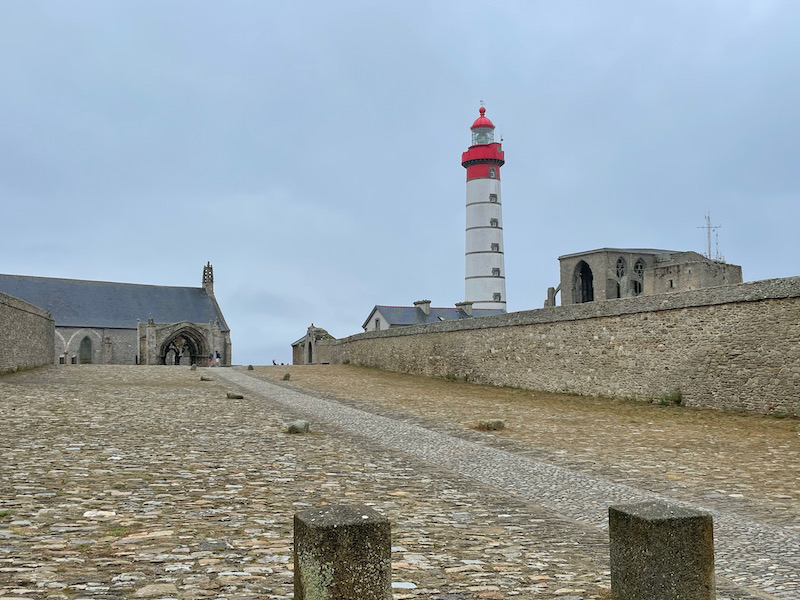
The chapel of Notre-Dame de Grâce was built in 1861 but the lovely 14th-century porch in front if it is the only vestige of an old parish church. The 14th century church and much of the town of Saint-Mathieu were victims of the English raid of 1558. The porch was saved but the church had to be rebuilt.
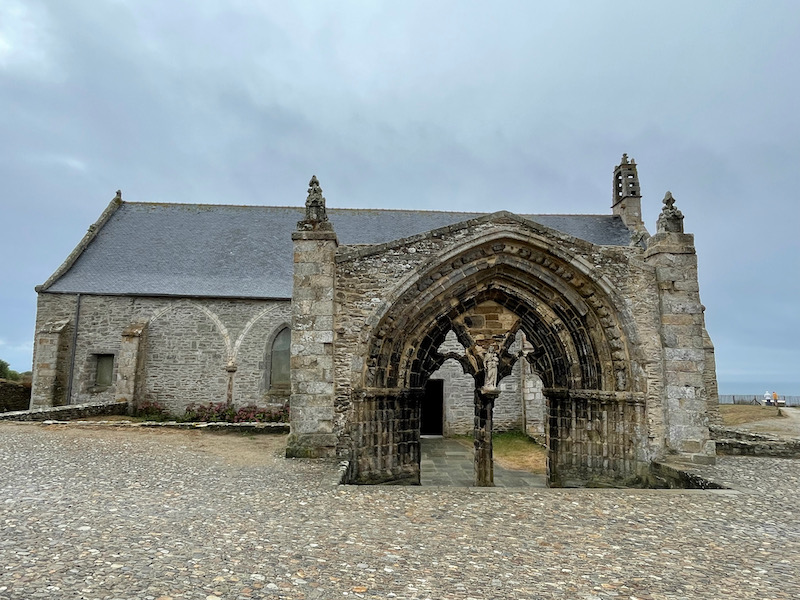
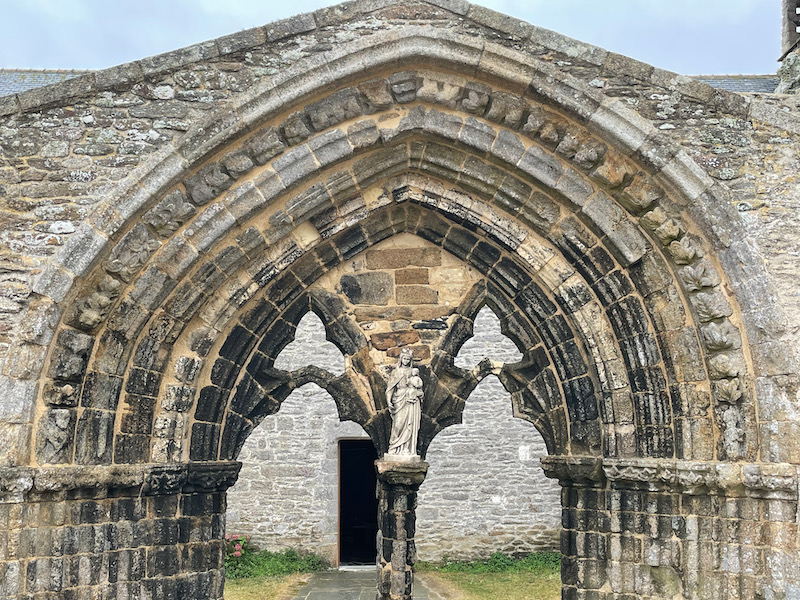
Once inside, it is a very simple chapel with an exposed wooden roof.
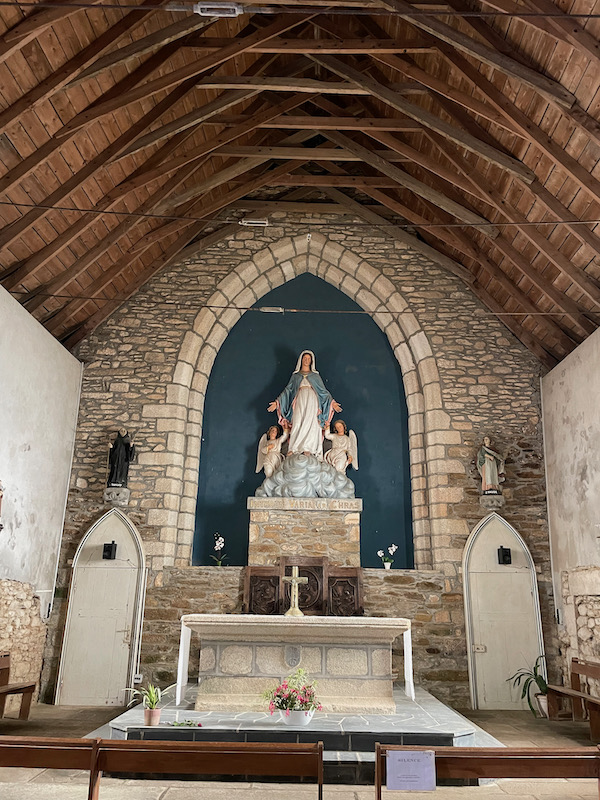
The lighthouse was built in 1835. It is a major lighthouse of the French coast, with a theoretical range of 29 nautical miles. There had long been a light signal for navigating ships before an actual lighthouse was built. But by the end of the 17th century, a new naval base in Brest required more serious methods of navigation for western Brittany. The first lighthouse was completed in 1692 but had a multitude of problems, such as the lantern being destroyed in 1750 during a large storm.
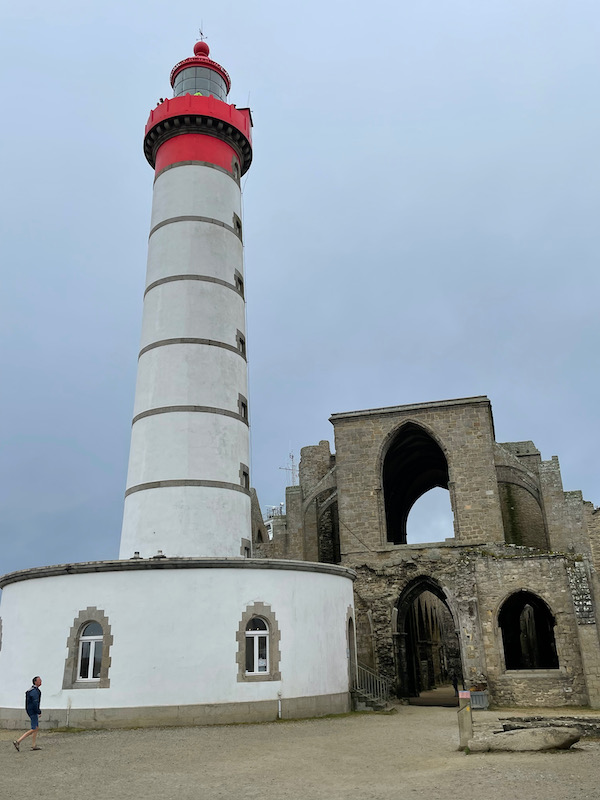
The Abbey was built in several stages between the 11th century (when Romanesque was the style) to the 15th century (when Gothic was the main style used). When the Saint Maur community of reformed Benedictine monks took over in the 17th century, they decided to build new buildings instead of attempting to repair the old medieval buildings. Here you can get a first couple peeks at the ruins including the high Gothic ribbed vaults in the nave and flying buttresses.
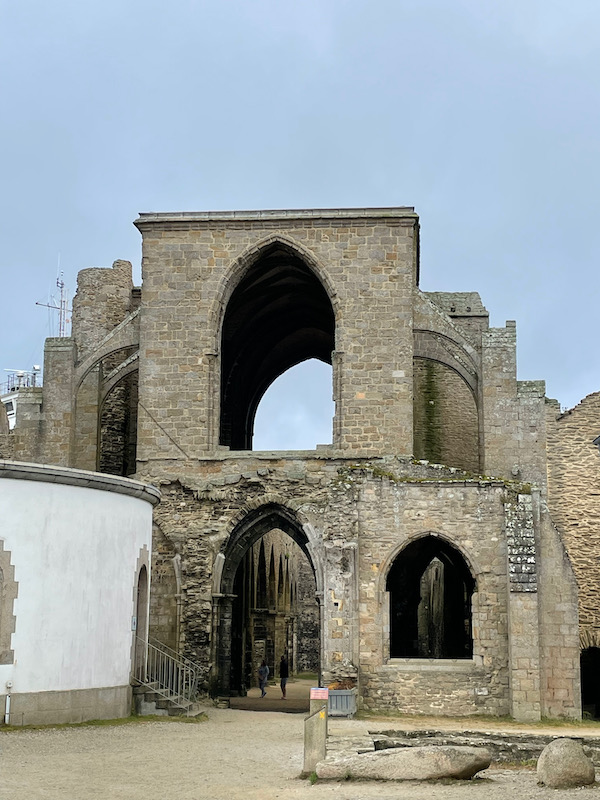
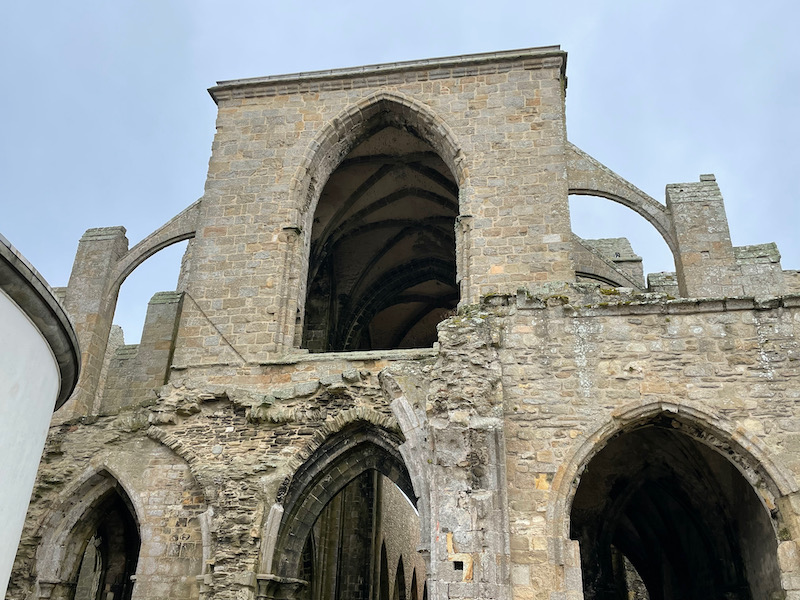
Due to the multiple centuries of work, various styles are visible. The west facade, characteristic of Breton Romanesque art, dates from the 12th century, with a trefoil arcade door surrounded by arches. The pillars and the large arcades of the nave would date from the beginning of the 13th century and a second aisle was added to the south in the 14th century. There are still a few vestiges of the building of the 10th or 11th century, such as a niche in the wall. The choir and the crossing of the transept date from the 14th century and is the only vaulted part of the building.
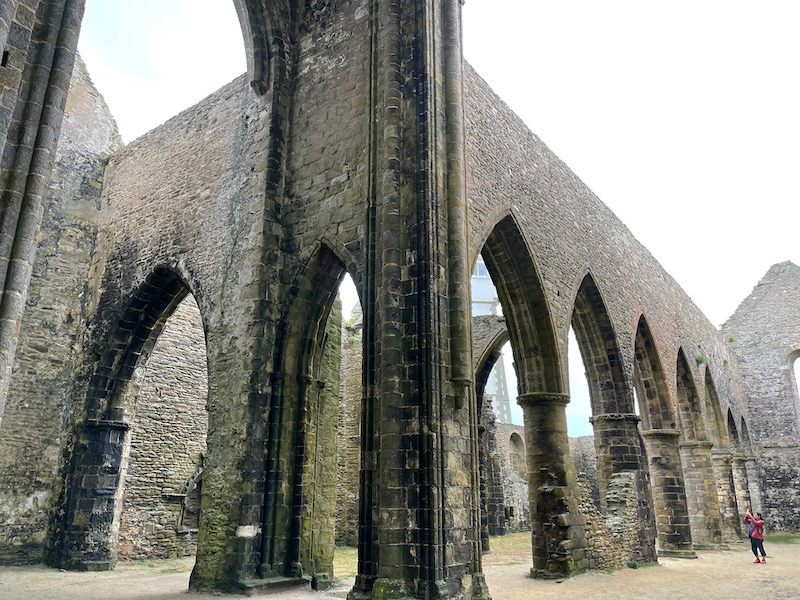
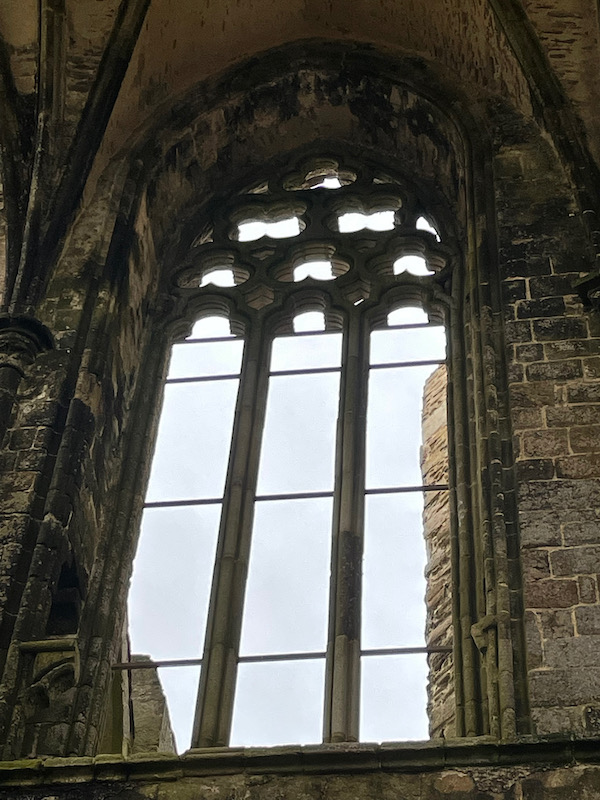
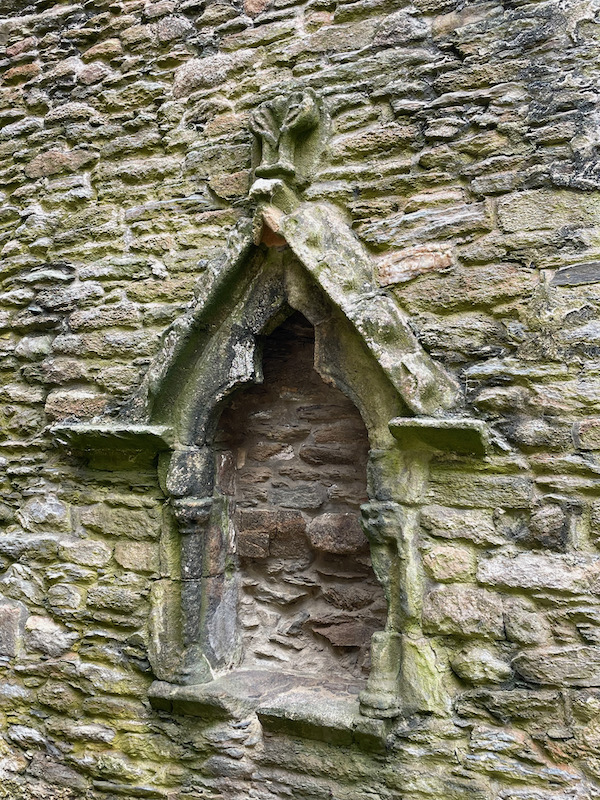
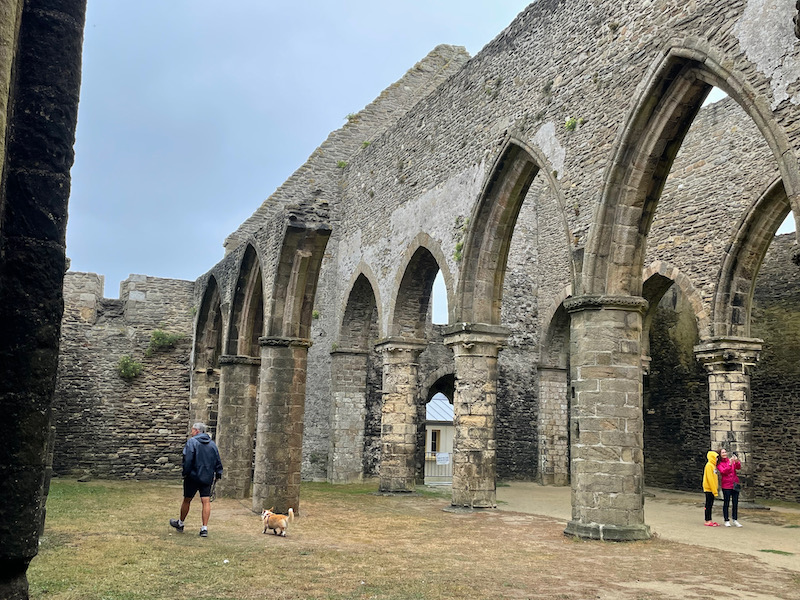
The other point of interest here is the National memorial to sailors who gave their lives for France. The original monument was to commemorate those who died in World War I, and was erected in 1927. The site now commemorates everyone from the maritime services, the navy, the merchant navy, and fishing fleets who died during the conflicts of the 20th century. Next to the original tower is now a flat cenotaph; literally an empty tomb in honor of those buried elsewhere.
